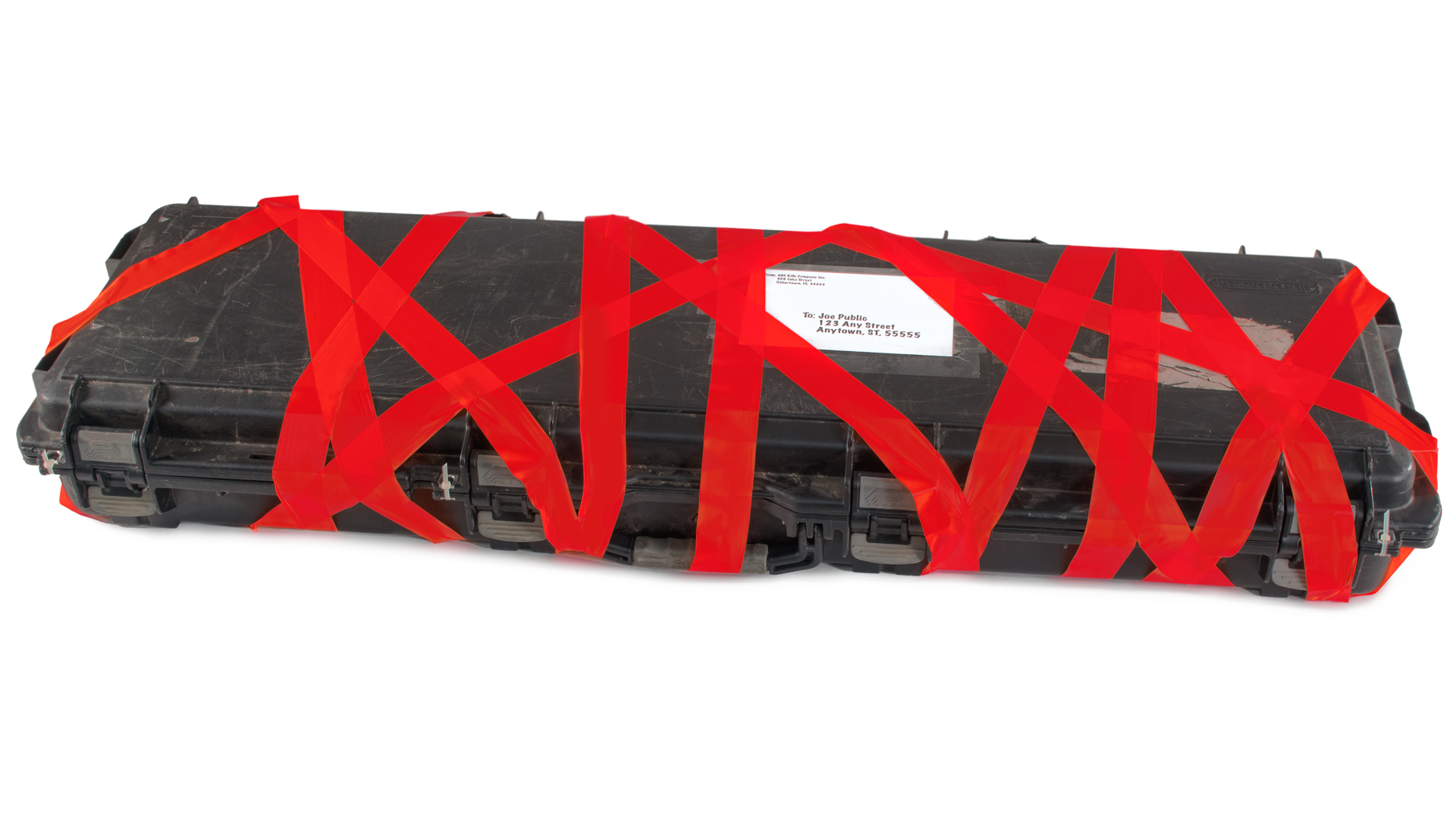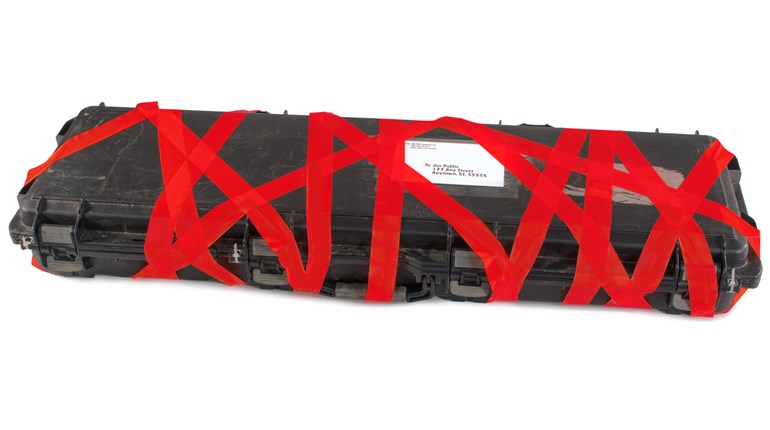
In the vernacular of U.S. military snipers, “Send it” is often the last thing a sniper hears from his spotter (also a sniper) a few instants before breaking a well-aimed shot. Unfortunately, this month’s topic is nowhere near as interesting as the dynamics surrounding how a typical, two-person sniper team operates. Instead, we’ll sip from a can I’ve been kicking down the road for several years: shipping rifles. My procrastination on this topic was due to the relative ease with which firearms could be shipped—until very recently. Thanks in large part to rule changes made by the two most popular common-contract carriers, shipping rifles (or any other firearms) is no longer simple.
Rather than veering into the “why” behind these new rules, I’m going to stay rooted in the present—at least as of this writing—and stick with the “how” of moving lawfully owned and possessed long guns from point A to point B through shipping channels. All references to rifles here also apply to shotguns, but I’m still masquerading as the rifles guy, so I’ll have to avoid the “S” word.
The primary-source documents where federal firearm laws and regulations can be found are “18 USC” (United States Code) and “27 CFR” (Code of Federal Regulations). Neither document is fun to read or easy to search, but you can find summarized extracts from these sources in the “Firearms Q&As” section of atf.gov. Note that ATF uses the terms “licensee” and “non-licensee” to denote people with and without Federal Firearms Licenses (FFLs). When it comes to federal firearm-shipping regulations, the specific FFL types referred to are limited to firearm dealers (including gunsmiths), manufacturers and importers. My own references to FFLs here will likewise refer to those same three licensee categories.
All the usual caveats apply with regard to following local, state and federal laws when shipping. While the United States Postal Service (USPS) draws directly from these regulations, contract carriers sometimes add their own restrictions above and beyond existing laws and regulations. Such is the case with UPS and FedEx, so we will dispense with the bulk of that bad news right now.
Both UPS and FedEx allow only FFLs, law enforcement agencies and specific governmental entities to ship and receive firearms of any type, for any reason. That means unless you happen to be an FFL, you’ll have to enlist the services of one to both send your rifle to a gunsmith or to a manufacturer for warranty repairs, or to receive your rifle from either. An added complication is that in order for FFLs to use UPS or FedEx for this purpose, they must first apply for and receive approval to be a firearm shipper from the company they want to use. As an FFL myself, I can attest that this process is neither simple nor a hoop that every FFL will choose to jump through. UPS takes it one step further by requiring that firearm parts only be shipped by FFLs as well. What constitutes a firearm part? According to the UPS representative who serviced my old account, UPS considers a firearm part to be “anything that would be assembled to make a gun or added to a gun,” such as magazines, small parts, aftermarket furniture or any other components.
Moving on to brighter skies, USPS appears to mirror federal guidelines when it comes to the shipping of rifles. “Publication 52” is the postal service’s main-source document for firearm-shipping rules. According to section 432.3, so long as the rifle is unloaded and all other laws (state, local, etc.) are in full compliance, a non-FFL may mail a rifle to another non-FFL within the sender’s state of residence. Outside of one’s state of residence, it may be mailed to an FFL or to yourself (in care of someone else), in advance of your arrival at the destination address. Specific rules are outlined for each of these situations, so check local, state and USPS regulations before shipping that family heirloom off into the wild blue yonder, whether for repair or use in a different state.
USPS regulations are elusive on the topic of FFLs returning firearms to their lawful owners. However, “27 CFR § 478.148” states that an FFL may return a firearm (or like replacement) to its owner across state lines. There are no restrictions on shipping firearm components and parts through USPS, except that receivers and frames that ATF classifies as firearms must be shipped as firearms.
It’s always a good practice to insure your rifle for its full replacement value (remember to include optics, bipods and any other accessories added to the rifle in the amount for which you are insuring the shipment) and in all cases require an adult signature on the receiving end. Choose a good quality box (don’t assume if your rifle came with a hard case that it will suffice for shipping purposes) that is either new or in like-new condition and that has no outside indications of the firearm(s) inside. Use ample padding and assume that a bare muzzle, bolt handle or other pointy part will attempt to break out of the box at some point during its travels. If you want to go the extra mile to protect your shipment, wrap or bag the padded rifle in something that will keep it dry and include a desiccant pack in the box. Last year I received a vintage rifle in a rain-soaked box, but the sender had mummy-wrapped it in plastic, so the ancient finish and delicate lockwork remained unscathed.
USPS requires that you declare the firearm and certify that it is unloaded before handing your package over to them. At no time may ammunition be shipped with a firearm (regardless of shipping method). You may be required to show a copy of the receiving FFL’s license and include a copy of your driver’s license with the firearm as well. A note for the receiving party is always a good idea. One of my outgoing rifle shipments, also last year, arrived at the receiving end completely out of the box. In fact, there was no box at all, just a rifle in a case. Thankfully, the paperwork was also in the case, so the receiving gun shop had sufficient information to be able to contact me for guidance.
With long-gun shipping becoming more complicated in recent months, it’s important to place close attention to the current rules that the various shippers require. By following the relevant laws and shippers’ rules, it's still generally possible to get your rifle where it needs to go. The new shipping rules do still allow FFLs to ship rifles, so your local FFL can likely help you through one of the above methods, but that will likely come with increased costs. Don’t assume this translates to all firearms, though. In the case of handguns, you will generally have no choice but to use an FFL for shipping. Oops, I strayed from rifles again—forget that I ever mentioned the “H” word here.



































